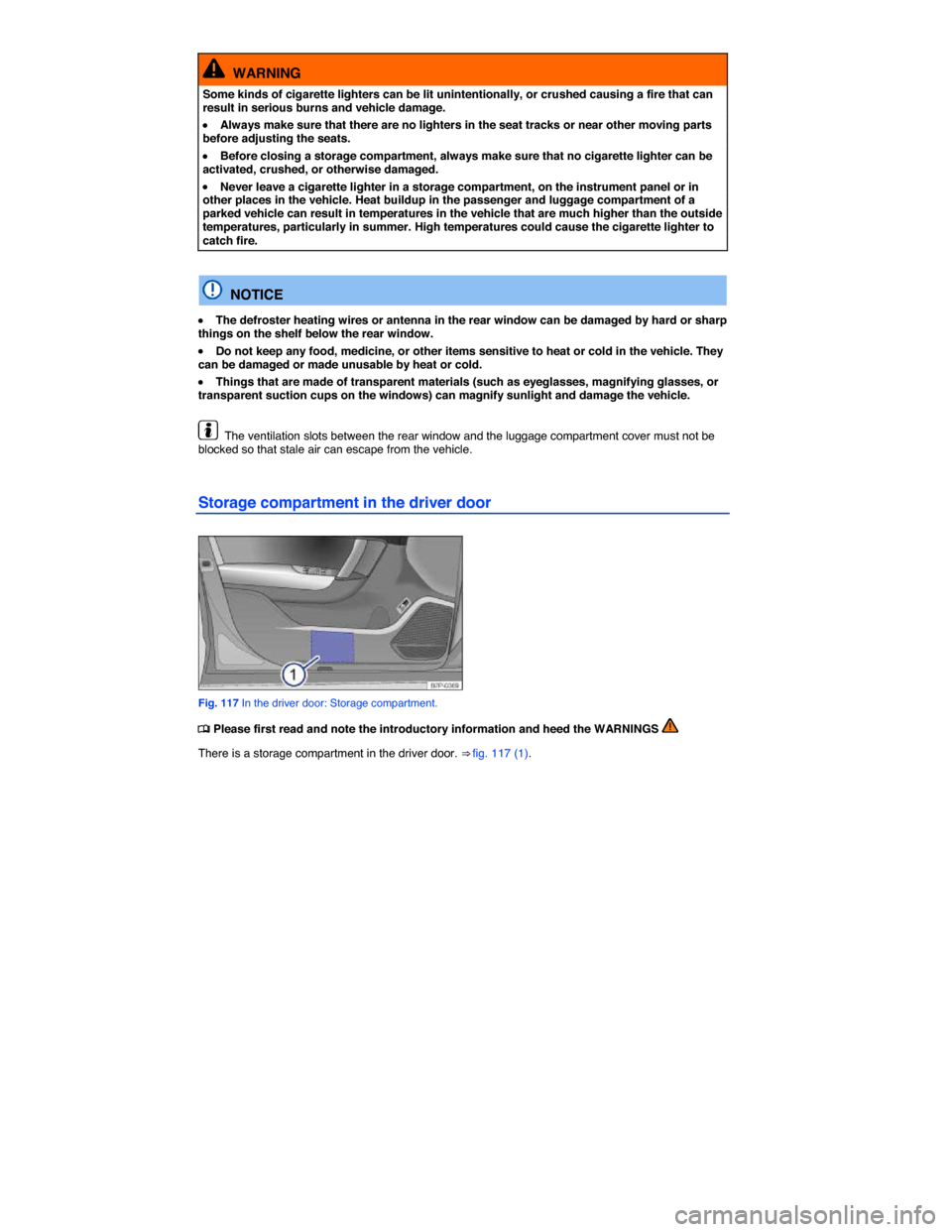2015 VOLKSWAGEN TOUAREG light
[x] Cancel search: lightPage 198 of 684

Radial ply tires
A pneumatic tire in which the ply cords that extend to the beads are laid at substantially 90 degrees to the centerline of the tread.
Recommended inflation pressure
The tire pressure recommended by the vehicle manufacturer for a tire of a specified size that has not been driven for more than a couple of miles (kilometers) at low speeds in the 3 hour period before the tire pressure is measured or adjusted.
Reinforced tire
A tire designed to operate at higher loads and at higher inflation pressures than the corresponding standard tire.
Rim
The outer edge of a wheel upon which the tire beads are seated.
Rim diameter
The nominal diameter of the wheel's tire bead seating surface. If you change your wheel size, to wheels of a different diameter, you will have to purchase new tires to match the new wheels.
Rim size
Designation means rim diameter and width.
Rim type designation
The industry or manufacturer's designation for a rim by style or code.
Rim width
The nominal distance between wheel rim flanges.
Section width
The linear distance between the exteriors of the sidewalls of an inflated tire, excluding elevations due to labeling decoration, or protective bands.
Sidewall
The portion of a tire between the bead and the tread.
Sidewall separation
The parting of the rubber compound from the cord material in the sidewall.
Speed rating (letter code)
A standardized letter code indicating the maximum speed at which a tire is designed to be driven for extended periods of time. The ratings range from 93 mph or 150 km/h (“P”) to 186 mph or (300 km/h) “Y”.
The speed rating letter code, where applicable, is molded on the tire sidewall ⇒ Tire labeling. You may not find this information on all tires because it is not required by law.
Tire Pressure Monitoring System (TPMS)
A system that detects when at least one of a vehicle's tires is underinflated and illuminates a low tire-pressure warning light.
Tread
The portion of a tire that normally touches the road.
Page 205 of 684

may apply. See http://www.dtsc.ca.gov/hadardouswaste/perchlorate. Obey all applicable legal re-quirements regarding proper disposal.
Do not rely solely on the Tire Pressure Monitoring System (TPMS). Check your tires regularly to make sure they are properly inflated and have no signs of damage, such as punctures, cuts, cracks, and blisters. Remove any objects that become embedded in the tire tread but have not penetrated into the body of tire itself.
When you take delivery of the vehicle, the Tire Pressure Monitoring System (TPMS) is calibrated for the factory-recommended cold tire inflation pressure for the tires on your vehicle, as shown on the
label inside the driver door ⇒ fig. 111.
�x For replacement tires that require a different inflation pressure, the TPMS must be adjusted to the new pressure specification by an authorized Volkswagen dealer or an authorized Volkswagen Service Facility. Only one value can be entered for each tire partial or full load; see the tire inflation pressure
label on the driver door pillar ⇒ Tire inflation pressure.
�x To help prevent damage to the sensor and valve, do not put excessive force on the valve when checking the tire pressure. Do not try to bend the valve.
�x If sensors have to be replaced, have the valves changed at the same time.
�x The tire valve gaskets must be replaced whenever a tire is mounted on the rim. Your authorized Volkswagen dealer or authorized Volkswagen Service Facility has a valve seal and gasket kit for this purpose. Always make sure that a valve seal and gasket kit is also used whenever a sensor is re-placed.
�x If you have to adjust the tire pressure on a “warm” tire, fill the tire with 2.0 - 4.35 psi (20 - 30 kPa) more than the pressure specified on the tire pressure label.
�x When the TPMS determines that the air pressure in at least one tire is too low, carefully check the pressure in all 4 tires with an accurate tire pressure gauge. Low tire pressure usually cannot be deter-mined by looking at the tire. This is especially true of low-profile tires.
�x A Declaration of Compliance with the United States FCC and Industry Canada regulations is found on of this manual.
There may be differences between the pressure readings from a tire pressure gauge and the pressures registered by the Tire Pressure Monitoring System (TPMS). The electronic TPMS is more accurate.
If you have work done on your wheels or tires, inform the workshop that the vehicle is equipped with a Tire Pressure Monitoring System (TPMS) that has sensors in the wheels.
New tires may expand slightly the first time they are driven at high speeds, which can trigger a tire pressure warning. Remember that tire pressure can only be properly measured when the tire is
“cold” ⇒ Tires and wheels.
Indicator light (telltale) �
Page 206 of 684

Lights
up
Display
text
Possible cause or
meaning ⇒
Proper response
�
Page 207 of 684

Flashes Display
text
Possible cause or
meaning ⇒
Proper response
(Intermittently
while driv-
ing.)
cation problem be-
tween a sensor and
the system. This
may be caused by
interference from a
nearby radio trans-
mitter (such as a
mobile phone or
other broadcast de-
vice) that uses the
same frequency
range. The indicator
light should stop
flashing as soon as
you are far enough
away from the de-
vice causing the
interference.
terference off.
�
Page 210 of 684

Key to ⇒ fig. 116
Position number Meaning
(5) No data received, right rear tire.
(6) Benchmark pressure, rear tires.
If the tire pressure is too low, the relevant tires and the respective readings are shown in yellow
⇒ fig. 116.
Each tire, including the spare (if provided), should be checked monthly when cold and inflated to the inflation pressure recommended by the vehicle manufacturer on the vehicle placard or tire inflation pressure label. (If your vehicle has tires of a different size than the size indicated on the vehicle plac-ard or tire inflation pressure label, you should determine the proper tire inflation pressure for those tires.)
As an added safety feature, your vehicle has been equipped with a Tire Pressure Monitoring System (TPMS) that illuminates a low tire pressure telltale when one or more of your tires is significantly underinflated. Accordingly, when the low tire pressure telltale illuminates, you should stop and check your tires as soon as possible, and inflate them to the proper pressure. Driving on a significantly underinflated tire causes the tire to overheat and can lead to tire failure. Underinflation also reduces fuel efficiency and tire tread life, and may affect the vehicle's handling and stopping ability.
Please note that the TPMS is not a substitute for proper tire maintenance, and it is the driver's respon-sibility to maintain correct tire pressure, even if underinflation has not reached the level to trigger illumination of the TPMS low tire pressure telltale.
Your vehicle has also been equipped with a TPMS malfunction indicator to indicate when the system is not operating properly. The TPMS malfunction indicator is combined with the low tire pressure telltale. When the system detects a malfunction, the telltale will flash for approximately 1 minute and then remain continuously illuminated. This sequence will continue upon subsequent vehicle start-ups as long as the malfunction exists.
When the malfunction indicator is illuminated, the system may not be able to detect or signal low tire pressure as intended. TPMS malfunctions may occur for a variety of reasons, including the installation of replacement or alternate tires or wheels on the vehicle that prevent the TPMS from functioning properly. Always check the TPMS malfunction telltale after replacing one or more tires or wheels on your vehicle to ensure that the replacement or alternate tires and wheels allow the TPMS to continue to function properly.
Collapsible spare tire
The collapsible spare tire has no tire pressure sensor. When the collapsible spare tire is mounted on the vehicle, the Tire Pressure Monitoring System (TPMS) indicator light will flash in the instrument cluster display. The TPMS continues to monitor the other 3 wheels.
Tire storage
If the tires do not move for an extended period of time, the sensors will not transmit tire pressures to the system. This saves sensor battery life. When the ignition is switched on, the sensors transmit signals to the Tire Pressure Monitoring System (TPMS).
Page 213 of 684

WARNING
Some kinds of cigarette lighters can be lit unintentionally, or crushed causing a fire that can result in serious burns and vehicle damage.
�x Always make sure that there are no lighters in the seat tracks or near other moving parts before adjusting the seats.
�x Before closing a storage compartment, always make sure that no cigarette lighter can be activated, crushed, or otherwise damaged.
�x Never leave a cigarette lighter in a storage compartment, on the instrument panel or in other places in the vehicle. Heat buildup in the passenger and luggage compartment of a parked vehicle can result in temperatures in the vehicle that are much higher than the outside temperatures, particularly in summer. High temperatures could cause the cigarette lighter to catch fire.
NOTICE
�x The defroster heating wires or antenna in the rear window can be damaged by hard or sharp things on the shelf below the rear window.
�x Do not keep any food, medicine, or other items sensitive to heat or cold in the vehicle. They can be damaged or made unusable by heat or cold.
�x Things that are made of transparent materials (such as eyeglasses, magnifying glasses, or transparent suction cups on the windows) can magnify sunlight and damage the vehicle.
The ventilation slots between the rear window and the luggage compartment cover must not be blocked so that stale air can escape from the vehicle.
Storage compartment in the driver door
Fig. 117 In the driver door: Storage compartment.
�
Page 219 of 684

Additional storage:
�x In the front and rear center console.
�x In the door trim panels (front and rear).
�x Shelf behind the rear seat backrest – only for light clothing or similar objects that do not interfere with visibility to the rear!
�x Coat hooks on the center door jamb and on the overhead grab handles in the rear.
�x Shopping bag hooks in the luggage compartment ⇒ Luggage compartment.
�x An elastic strap in the right side trim of the luggage compartment.
WARNING
Clothes or other items on the shelf behind the rear seat backrest may limit visibility, and cause thereby causing accidents and severe personal injuries.
�x Always hang clothes so that they do not limit visibility.
�x Always use the built-in coat hooks only for lightweight clothing. Never leave any heavy or sharp-edged items in the pockets that may interfere with airbag deployment and can cause personal injury in a collision.
Page 226 of 684

Outlet
⇒ fig. 130
(2)
Maximum power draw
115 Volts 150 watts (300 watts peak consumption)
The maximum power draw at any one outlet must never be exceeded. Electrical devices should have information on them that says how much power they draw.
115 Volt outlet
The outlet can only be used if the engine is running .
Connecting an electrical device: Insert the plug as far as it goes into the outlet in order to unlock the integrated childproof lock. There is electricity in the outlet only after the childproof lock is unlocked.
LED display on the outlet
Green continuous
light:
The child-proof lock is un-
locked. The outlet is opera-
tional.
Red flashing light: Malfunction, such as cutoff due
to current overload or over-
heating.
Opening and closing the cover in the rear center console
�x Reach into the recess from below; fold the cover up in the direction of the arrow and hold it open.
�x The cover is spring-loaded and closes when you let it go.
Overheating cutoff
The inverter in the 115 Volt outlet shuts off automatically above a certain temperature. The shutoff prevents overheating in case of excessive power consumption of connected devices or at high ambi-ent air temperatures. The inverter switches back on automatically after a cool-down period. Connected devices which were left switched on come back on again. For this reason, switch off connected electri-cal devices if the inverter switches off due to overheating.
DANGER
Improper use of the 115 Volt outlet can cause electrical shock, burns, and severe personal injury.
�x Never spill liquids on the socket.
�x Never plug an adapter or an extension cord into the 115 Volt outlet. Otherwise, the inte-grated child-proof lock is switched off and the outlet is live.
�x Never stick anything that conducts electricity, such as a knitting needle, into the contacts of the 115 Volt outlet.